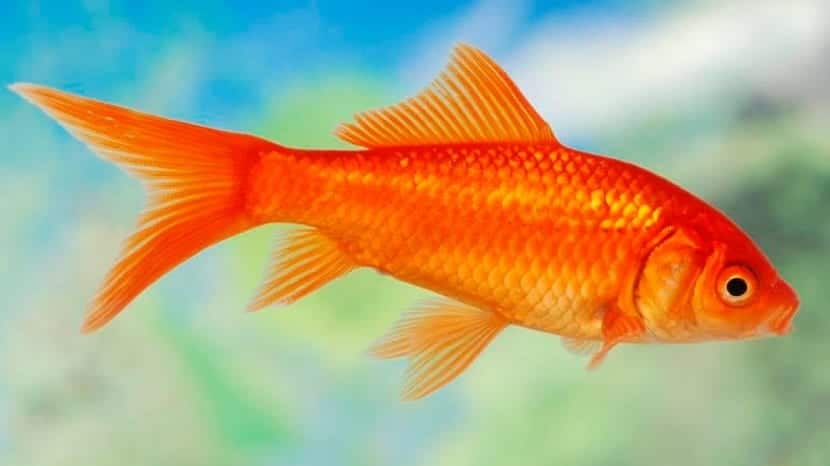
Today we are going to talk about one of the pioneer species in the world of fish tanks. Its about goldfish. Its scientific name is Carassius auratus and it is also known by the common name of golden carp. And it is that this species was one of the first to be used as pets after capturing them. Such has been their fame as a pet, that today they are the most abundant in the common fish tanks of all homes.
We explain everything about this species here. From their main characteristics, to what care you need to keep them in good health in our aquarium. Do you want to know more about goldfish?
Key features
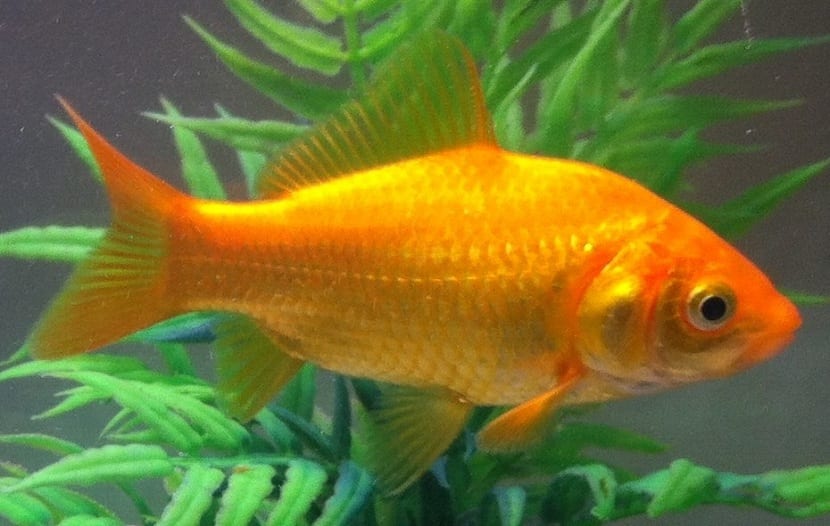
This species of fish has a size that is around 60 cm in length. However, depending on the care and type of genetics you have, specimens up to 90 cm long have been found. If the fish lives in the wild it can weigh up to 30 kilos. However, when cared for and bred in captivity, the weight is half.
They have a fairly high longevity, so they are more appropriate to be pets and not have to be replaced as often. Depending on the care given to it and the habitat where it develops, it is capable of living up to 15 years. They are perfect pond fish for its color and size.
They are quite friendly fish and not aggressive at all. They can perfectly coexist with other species de peces in the same aquarium or pond. The body is yellow and not elongated. It is a golden yellow shade with small flashes of orange on the tails and fins. They are quite adept at swimming and have the agility to search for food quickly. Normally you can see them gathered in groups so as not to feel threatened and protect each other.
Goldfish habitat
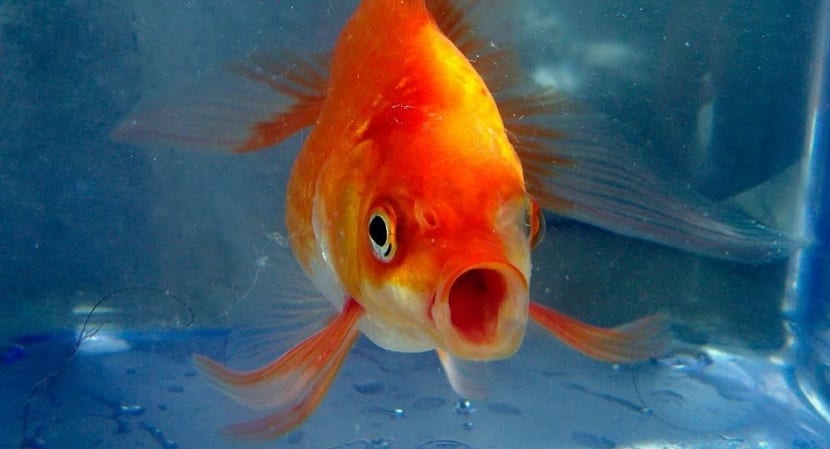
This fish has its habitat in all freshwater areas. It is impossible to find it in the ocean. The most advisable way to prepare a habitat that is closest to nature at home is the use of ponds. These ponds guarantee greater mobility and an area where they are used to being.
There are experts who have thoroughly studied this species and can affirm that they live better in captivity than in their own natural habitat. It may seem strange like this at first glance since neither its longevity nor its weight are adequate in captivity. However, they are species that have become used to living this way. The only feature that keeps these fish in their natural habitat is the temperature of the water where they live. Otherwise, they could not develop and the species would go extinct.
In captivity they live much better and even more in ponds. Therefore, it is vitally important to have them as pets as long as we can guarantee an ideal habitat for them.
Behavior and feeding
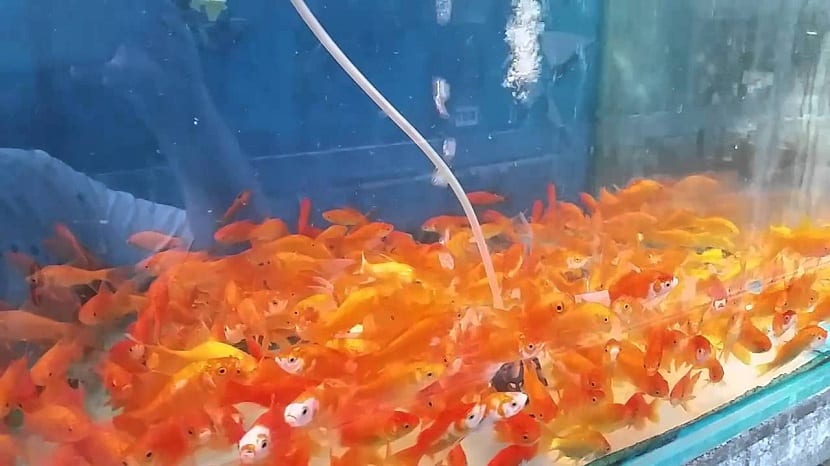
Goldfish have a fairly calm condition. It does not usually give problems if it lives with other species. As they are always grouped when there is more than one specimen, it will be rare to see only one. In their natural habitat they are more prone to fighting other species, but in captivity they are really calm.
They are very curious fish that like to explore everything around them. They will always be looking for some new things to entertain and explore.
Regarding your diet, are considered omnivorous fish. They feed both on the plants in their environment and on other species around them. Their menu typically consists of insects, bacteria, larvae, seedlings and eggs of other species. It is the latter that makes the goldfish consider a predator. Many other species have to keep an eye on their young for possible catches of goldfish.
To feed it if we have it as a pet, we don't have to worry. You can give him food sold in stores de peces both alive and not. Supplementing the diet with some live food may be a good idea. Some larvae, sea fleas or bacteria are a good option. For the plant part, you can give him lettuce and cauliflower. If we want to treat him occasionally, we can give him some shrimp. At first, if we have been with these fish for a short time, they will be a little more fearful and reluctant to taste the food. However, as the days go by, his mistrust will pass and he will eat everything.
Its predatory appearance can also do so in captivity. Capturing the eggs of other species can happen inside your aquarium or pond. You have to have more control over these fish when the other species are in the breeding season.
Reproduction
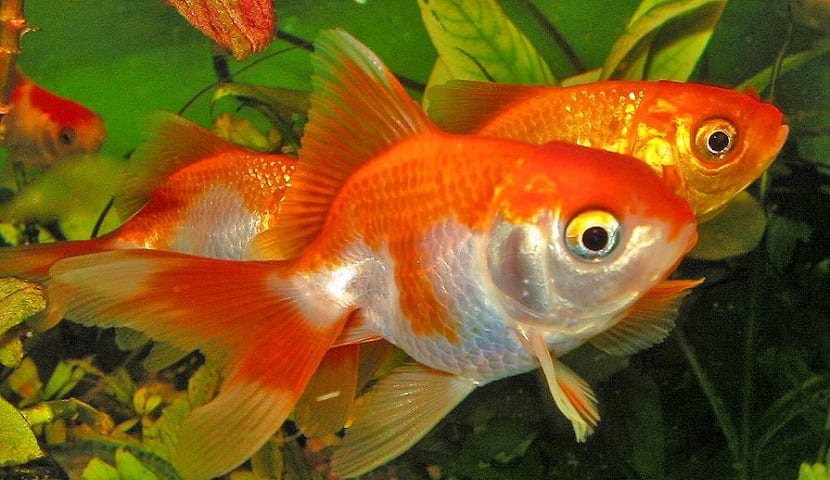
This fish it is somewhat more complicated when it comes to reproducing. Conditions need to be the most suitable for reproduction to take place. This occurs in both natural and artificial habitats. They reach sexual maturity at two years of age. It depends entirely on how long you have been able to develop during that time. Not only environmental conditions must be strict, but also adequate food for its growth.
Reproduction is not very complicated if the best fish care is taken from the first moment. If they are cared for in ponds, reproduction is much easier. Ambient temperatures are more likely to produce reproduction when they are higher. What is necessary is that the water temperature is higher so that the reproduction occurs in better conditions. This happens in the spring time.
Courtship is similar whether they are in natural habitat or in ponds. The most normal thing is that it is the male who tries to chase the female to get her. Fertilization occurs when the male who has achieved it repeatedly pushes the female against the rock or algae that are around. This is how the female releases her eggs and the male fertilizes them.
I hope that with this information you can learn more about goldfish.
Thank you very much for the information 🙂